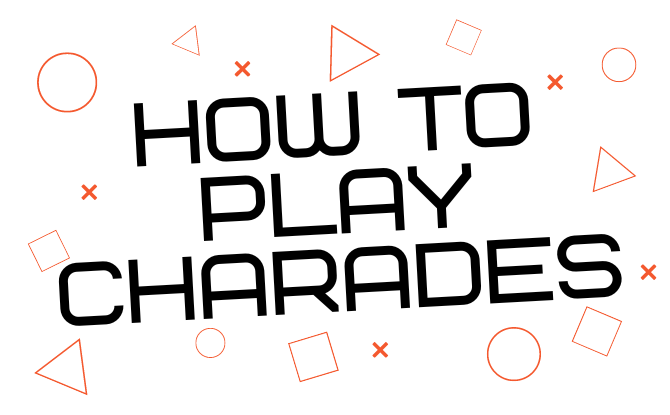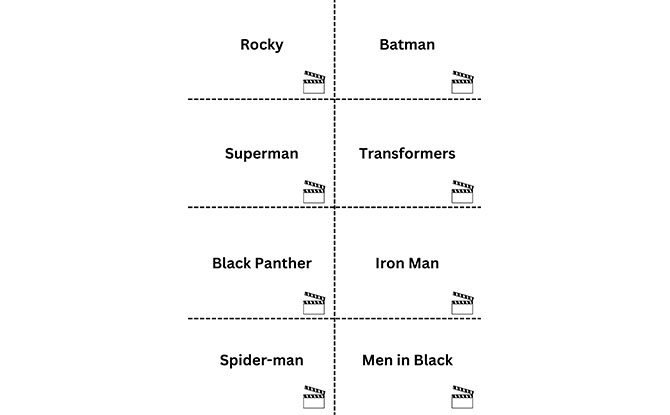
Charades is a classic party game that everyone can get involved in. If you are wondering how to play charades, we’ve put together this easy to follow along to guide to help you get started and play the game.
Origins of Charades
According to the British Library, the game of charades is said to have been created in France before it became popular in England in the second of the 19th century.
The game has long been associated with parties. In 1850, a guide was published by the Brothers Mayhew that promoted the game of charades. It then became even more popular than other games like blind man’s bluff.
How to Play Charades: Rules & Variations
The game of charades involves two opposing teams.
CARNIVAL OF CHRISTMAS CHEER: Celebrate and Win at Plantation Plaza and Northshore Plaza!
SNOW MUCH TO CELEBRATE: Christmas Fun at The Centrepoint
It is a game of actions and not talking.
To prepare for the game, a selection of words or phrases should be written down on pieces of paper. Then the individual pieces of paper with the words or phrases are folded in half and placed inside a bag or hat.
Teams then need to take turns acting out out the words.
A member of the first team will draw out a piece of paper, without seeing what is written on it, from the bag or hat. Without speaking, he has to communicate to his or her team mates what the word is; he or she will have to act out the word using his or her hands or with body motions to his or her team.
Team mates will have to guess the word being acted out within a set amount of time (for example one minute).
If the team is able to correctly guess the word or phrase, the team will score a point.
After the round is over, it is then the other team’s turn to draw out a word an act it out.
A variation to the game that add to the excitement of a game of charades is the opportunity for the opposing team to steal the point. If a team is not able to guess the word by the end of the allotted time, the opposing team will have the opportunity to guess the word. If they are able to correctly guess the word or phrase correctly, they will gain a point.
The team with the most number of points at the end of all the rounds wins.
Common Charades Hand Signals
Over the years, a set of hand signals have developed over time and are commonly associated with how to play charades. This helps the player who is acting out the word or phrase to give clue to his or her team mates.
Some of these hand signals can be used to communicate the categories of the words or phrase, or can also be used to help clue in the team to specific words or even syllables.
Here are some common charades hand signals:
Number of words in the phrase: You can hold up your fingers to indicate the number of words are in the phrase to be used. For example, if the phrase is “Return of the Jedi”, you can hold up four fingers to indicate that the team will need to guess a four word phrase.
Zeroing in on the word: To focus in on a particular word in the phrase, after signalling the number of words, you can hold up the number of fingers that correspond to the word that you will be acting out. For example, for the phrase “Return of the Jedi”, holding up one finger will indicate that you are planning to act out the first word, in this case “Return”.
Sounds like: Another useful hand signal when playing charades is “sounds like”. This is to indicate that you will be acting out a word that sounds /similar to or rhymes with the actual word. To signal this, you can use your fingers to tug on your ear lobe.
Longer or shorter: If you need to indicate to the team mates that they need to guess a longer or shorter version of a word, you can use your thumb and index finger to create a motion of getting shorter for a shorter word. Alternatively, you can stretch out your arms to indicate that a longer version of the word is needed.
Accurate guess: One charade hand signal that is useful is tapping your nose and pointing to a person who has correctly guessed a word in the phrase. This can be helpful in getting everyone to focus on the correctly guessed word when the whole group is boisterously shouting out guesses.
Charades Categories
Very often you may find that charades are themed based on certain categories. Common categories include movies, songs, television, books, famous people or theatre plays.
You can make use of various hand signals to also indicate these charade categories.
Movie: For this, pretend that one hand is an old fashioned movie camera and that the other hand is turning the crank to get the camera reel moving.
Song: For this, pretend to hold a file of sheet music in one arm and use the other hands to indicate sounds coming out from your mouth.
Television show: To indicate that the phrase is related to television, use your fingers to draw a box to mimic the shape of a television.
Book: Signalling a book is simple; just pretend that you are opening a book.
Famous person: Step forward with your best pose of a distinguished, famous person.
Theatre plays: Pretend to draw apart the curtains of a theatre and step through it on to the stage.
Charade Word-Phrase Ideas
Now that you know how to play charades, here are some charade word ideas to help you get started.
These are categorised by difficulty.
Easy Charade Words and Phrases
- Love
- Knock
- Slow
- Chicken
- Rabbit
- Stop
- Elephant
- Backpack
- Big
- Swimming
- Basketball
- Football
- Golf
Medium Difficulty Charade Ideas
Here is the next level of difficulty of charade ideas.
- Laugh
- Wheel
- Nod
- Beaver
- Moose
- Wristwatch
- Grandfather clock
- Bed
- Bored
- Well
- Photographer
- Thought
Moderate Charade Word Ideas
- Jewel
- Ship
- Porcupine
- Salamander
- Bumper car
- Forbid
- Worry
- Winter
- Artist
- Ticket
- Old
- Owl
- Hour
- Shipwreck
- Owner
- Witty
We hope that these have been helpful in giving your ideas on how to play charades. It is such a fun party game and one that you can play even with a big group.
You can also download our charade ideas for movie titles.
Get even more fun party game ideas.
Need even more ideas? Check out these great list of charade ideas for kids.





















